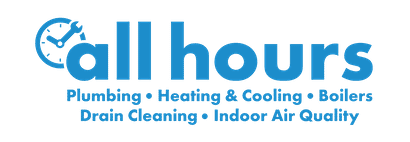How You Can Stay Safe By Monitoring Your Indoor Air Quality
How You Can Stay Safe By Monitoring Your Indoor Air Quality
Good quality air in your indoor environment can ensure comfort and reduce the risk of developing respiratory conditions such as asthma or respiratory inflammation. Most people would probably find it undesirable to spend hours in a room that has poor air quality and poses a risk for air pollution.
It is important to monitor the quality of the air in your Millcreek home because of possible air pollution from particulates emitted from gas stoves or heating systems. Poor air quality may also be a result of a poorly ventilated house with limited distribution and circulation of clean air.
Types of Contaminants That Affect Air Quality
While there are many types of indoor air contaminants, some of the common ones include carbon monoxide, volatile organic compounds, and particulate matter.
Carbon monoxide might slowly build up in your property as a by-product of using gas stoves for cooking or boilers or furnaces, which use gas or oil as their source of fuel. Carbon monoxide is hard to detect since it is not visible and does not have a distinct smell, making it a dangerous contaminant. As it builds up, it can cause chest pain and fatigue, especially in poorly ventilated environments. Once it accumulates to high levels, it can lead to suffocation.
Volatile organic compounds (VOCs) are usually the main source of poor indoor air quality. These VOCs are typically produced by materials around your home such as plastics and glues. Most of these compounds are manufactured using formaldehyde, which has been shown to be a carcinogenic agent. Many cleaning agents and disinfectants might also contain VOCs, too.
Particulate matter contaminants are usually substances such as dust, smoke, or soot. While particulate matter varies in size, the most dangerous ones are those of 10 microns or smaller, which, if inhaled, can cause respiratory ailments. Particulate matter is usually generated by fireplaces or smoke from cigarette smoking.
Given the different types of indoor air contaminants, here are some ways to monitor your indoor air quality.
Using an Indoor Air Quality Monitor
Indoor air quality monitors function by detecting the presence of air contaminants and converting the detected amounts into a reading that can inform you of your air quality. These monitors or sensors can be placed in various locations around your indoor environment so they can accurately measure the air quality.
An air quality monitor provides you with useful information about the air quality in your house. Depending on your budget and preference, some air quality monitors are handheld devices that can be carried around your residence and used to measure the air quality in different rooms. Other devices are desktop monitors, which usually stay in one room.
When installing or placing sensors in an indoor environment, you should avoid placing them in direct sunlight or near fans or heaters. Depending on which contaminants you want to measure, you can consider purchasing a sensor that measures the carbon monoxide level, VOCs, and particulate matter, along with other contaminants.
The placement of the sensors in an indoor space will also depend on the type of contaminant you are trying to measure. Some contaminants, such as carbon monoxide and methane, tend to settle closer to the ceiling, while contaminants such as chlorine settle closer to the floor.
You could also consider obtaining an indoor air quality monitor with specifications for the air filters. Most air contaminants with a size of 2.5 microns or smaller are dangerous because they can penetrate the lungs, resulting in serious issues with breathing.
With these air quality sensors, you can choose how to be alerted when the air quality goes below a certain threshold. You could also choose to connect the device to a home air purification system that would turn on once the air quality changes. Some devices also have color codes to indicate when the air quality changes.
Some air quality monitors also have internet capability, and when connected to your home Wi-Fi network, they can provide the air quality measurements obtained from local outdoor weather stations. These readings can be useful in providing values of the outdoor air quality, which you can compare to the quality of air in your house. You can also obtain these air quality index readings from a weather app.
Using Carbon Monoxide Sensors and Alarms
If you are unable to use an indoor air quality monitor to measure the presence of contaminants in your indoor air, you can focus on contaminants such as carbon monoxide. Unlike other contaminants that might have slow effects on your health, the effects of carbon monoxide occur much faster. Prolonged exposure to carbon monoxide can result in suffocation.
Since carbon monoxide is produced by any appliance that burns gas as a fuel, it has higher chances of accumulating in a home indoor environment. Most carbon monoxide alarms are loud and powered by batteries, meaning that they can alert you of carbon monoxide accumulation even in the middle of the night. Carbon monoxide sensors are also cheap and can be purchased at many department stores.
Schedule an Indoor Air Quality Inspection
You can also schedule an indoor air quality inspection, during which trained and certified professionals will test the air in your property for the presence of contaminants.
While air quality monitors can detect the presence of air contaminants, it is a good idea to have trained technicians assess the quality of air in your home. Air quality monitors might not indicate the source of air contaminants, but an indoor air quality inspection can point to any potential sources of contaminants such as faulty heating or ventilation systems.
An indoor air quality inspection, therefore, involves a visual inspection of your home’s heating and ventilation systems to identify any issues with combustion, which could result in increased accumulation of carbon monoxide in the house.
The technicians might also assess the ventilation levels in your residence as well as the levels of environmental factors such as carbon dioxide, carbon monoxide, and total VOCs. The inspection might involve assessing the level of mold buildup inside your property, too.
Contact Us Today
If you are looking to improve the indoor air quality of your house, we have timely, reliable, and affordable indoor air quality services available. At All Hours Plumbing, Heating & Air in Millcreek, UT, we believe that you and your family should have healthy air in your home. Our team of friendly, competent, and conscientious technicians will provide extensive testing of your indoor air quality and apply appropriate cleaning and prevention methods to eliminate contaminants from your residence. We also provide ductwork cleaning, microbe-blocking HEPA filters, air purifiers, humidifiers, and dehumidifiers. We offer a range of additional services, too, including HVAC and plumbing solutions as well as emergency pipe and boiler repair services. Contact us today for more information. Our team will be glad to answer any questions you may have about your indoor air quality.

Meet the Team
All Hours Plumbing, Heating and Cooling provides affordable plumbing, HVAC, and drain cleaning services in Salt Lake City, UT. We offer 24-hour emergency services and we’re dedicated to providing the absolute highest quality service at the best prices. We don’t overbid, and we don’t underbid with the idea of tacking on hidden fees; we simply give honest prices with honest answers.
Our complete lines of Salt Lake City plumbing and HVAC services include everything from drain cleaning and water heater replacement, to air conditioning repair and furnace maintenance. No matter what you need (or when you need it!), when it comes to your plumbing or HVAC, we have you covered. Reach out to us when you need plumbing or HVAC help, and we’ll show you how easy it can be to get your home’s systems working well again soon!

Honest Pricing
Honest Answers

Clean Home
Guarantee


